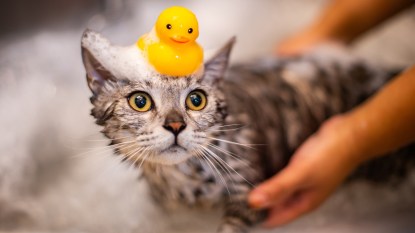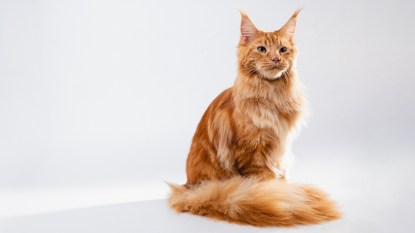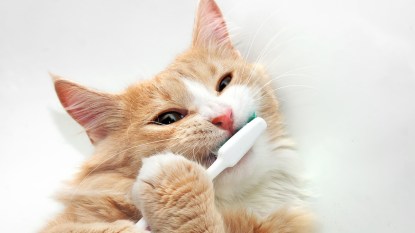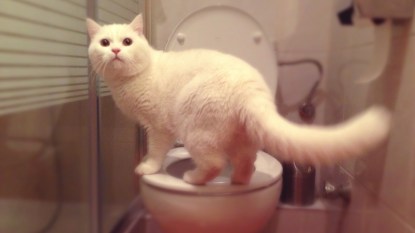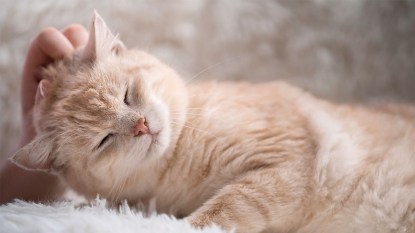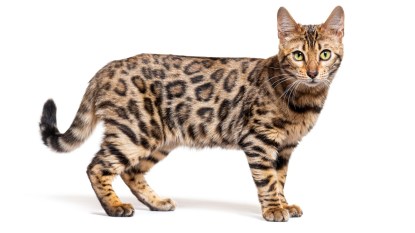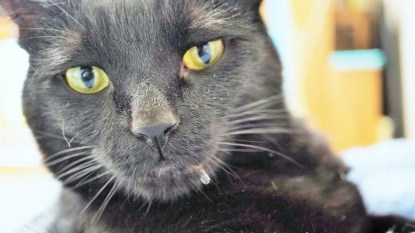What to Do When Your Cat Won’t Eat — and Why His Whiskers May Be to Blame
9 genius tricks to get your picky eater to enjoy meal time
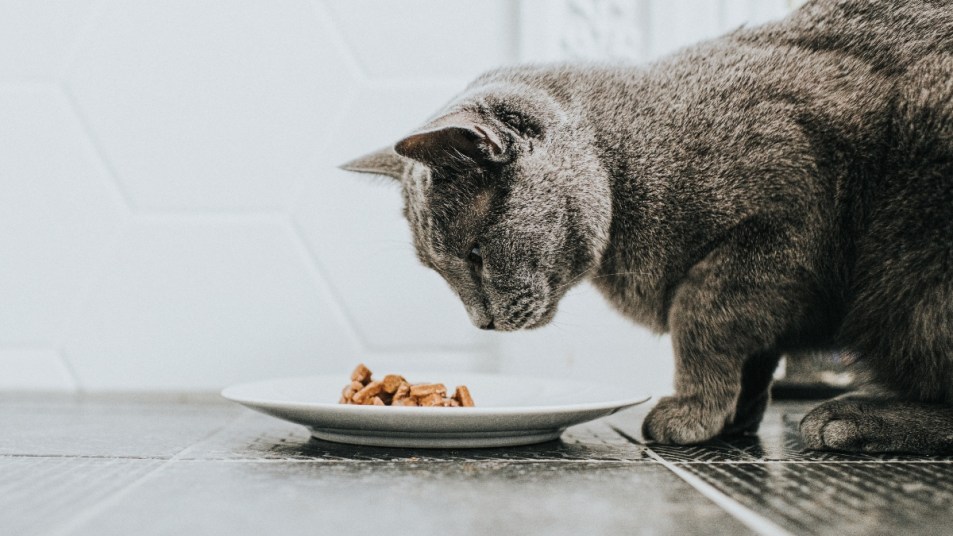
Cats can be tough to read, and even their owners may get frustrated trying to figure out what’s bothering them. One question that often pops up: Why won’t my cat eat? A cat turning his nose up or barely eating can certainly be a cause of concern! We asked veterinarians and cat experts for the answers, including what to look for, how to get a picky cat to eat and how to start them on new food.
Why won’t my cat eat?
A lot of a cat’s tendency to be choosy about their food can be linked back to their ancestry. “At their core, cats are predators,” says Samantha Bell, cat expert for Best Friends Animal Society. “Our domestic house cats are closely related to their wild ancestors. And their instincts still tell them to vary what they eat so their bodies get all the nutrients they require. A diet of only mice will be missing the nutrients they can get from birds, for example. So, they’re hardwired to want a little variety in their diet.”
Neophobia, or the fear or reluctance to try new foods or experiences, may also be to blame. The behavior is ingrained in cats because of their history as solitary hunters. “In the wild, cats would rely on familiar prey items for sustenance to minimize the risk of consuming something toxic or harmful,” adds Neus Torrent, DVM, an animal nutritionist for Outdoor Bengal. “Therefore, this innate neophobia served as a survival mechanism.”
Finally, some cats are more affected by change than others, which can lead to a decrease in appetite. This can be anything from changes in food brand or flavor to a new dining environment. “Some prefer a quiet, protected area to eat, while others prefer to eat socially, where family members are present,” says Jennifer Sperry, DVM, veterinary advisor for Pets Plus Us pet insurance. Even the addition of new pets in a home can turn a cat into a more picky eater.
Related: Why Cats Make Biscuits — Vets Reveal the Cute Reasons Behind Their Need to Knead
Keep an eye out for these behaviors
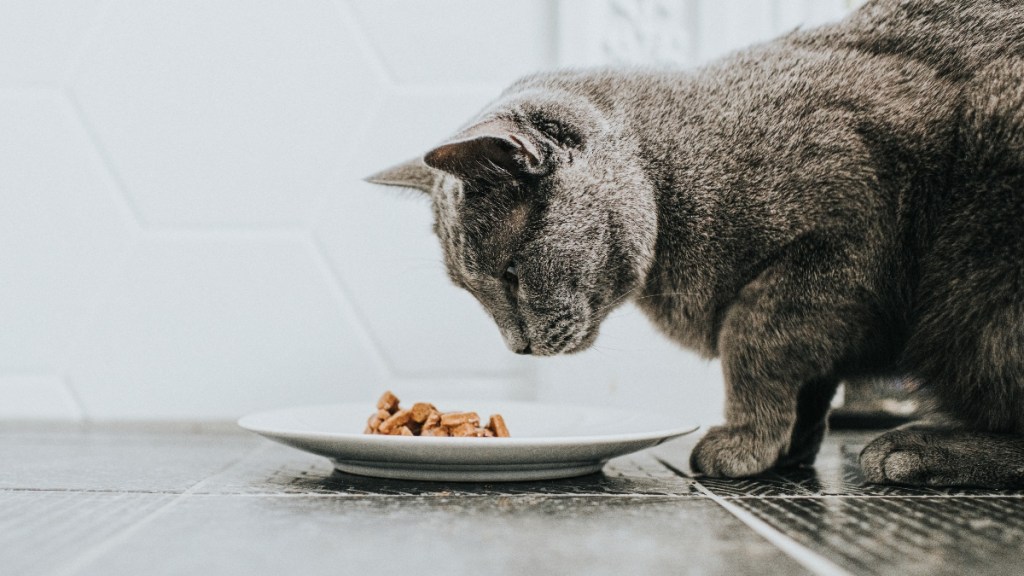
If your cat is refusing to eat certain types of food, you’ll quickly notice the behavior. But there are also less obvious signs that can indicate your furry friend is a selective or picky eater.
First, experts advise keeping an eye out for a change in eating times, messier eating or weight changes. You may also notice Whiskers is only eating parts of her food, consuming certain components and leaving the rest untouched.
Other behavioral cues to look for, according to Torrent: “Cats might display behaviors such as pawing at their food, sniffing it extensively or meowing in protest.”
Related: Can Cats Eat Bacon? Vets Reveal Which Brunch Foods Your Kitty Can Enjoy
How to get a picky cat to eat
If any of the above signs become noticeable, it’s best to address the issue right away. “As soon as you notice any behavior change in your cat, like finicky eating, the first thing to do is to get them to a vet,” Bell says. “There is often an underlying medical reason.”
A veterinarian will conduct a physical examination and possibly run diagnostic tests to see if there’s a health issue. Periodontal disease, kidney disease and digestive disorders are all possible explanations. Even minor illness can cause a cat to temporarily not be as interested in his or her food. “This could be the case if a cat is getting an upper respiratory infection (a kitty cold),” says Bell. “If they have any gastrointestinal issues or sensitivities, those could make their food less appetizing.”
Once you’ve ruled out health concerns, however, there are steps you can take to encourage your feline friend to eat.
9 must-try tricks to get your cat to eat
When you know Whiskers is healthy, you’ll want to get her chowing down on her food as soon as possible! The experts share different tactics you can try to encourage her:
- Try a new bowl. A possible cause of her reluctance: “Whisker fatigue, a condition caused by prolonged stimulation of the sensitive whiskers, can lead to discomfort and reluctance to eat,” explains Torrent. “Flat bowls allow cats to access their food without their whiskers touching the sides, reducing sensory overload and making mealtime more enjoyable.”
- Offer a variety of wet and dry foods that feature different protein sources. According to a study in the journal Royal Society Open Science, cats prefer foods with a 1:4 ratio of protein to fat. Cats are carnivores and need to eat a protein-rich diet. One essential amino acid found in protein is taurine. Without taurine in their diets, cats can develop serious health problems such as blindness and heart disease.
- Change up feeding time. Serve food at different times of the day and when you find times they like, stick to that schedule.
- Make food more exciting. “Add appetizing toppings such as small amounts of low-sodium chicken or fish broth, tuna with its juice, chicken meat, cheese or nutritional yeast,” says Torrent.
- Heat it up. “Offer wet food, or moistened kibble, that has been slightly warmed, to make the scent more appealing to cats,” shares Sperry. (Learn how often to clean bowls that contain wet food).
- Let your cat graze. Leave a small amount of dry food out. Some cats are nibblers and prefer grazing.
- Move the food. Feed your cat in a different spot, like one that is quiet and well sheltered. “Consider feeding your pet in an elevated location, such as on top of the clothes dryer, where they may feel safer from dogs or children,” adds Sperry.
- Limit treats. “Cats’ stomachs are the size of a ping-pong ball,” Bell explains. “If you give your cat several treats, it’s going to fill them up and then they won’t be as hungry for their regular food. So, it’s not so much that the flavor of the treats is making them finicky. They’re just filling up on things other than their regular food.”
- Play together. “You can also play with them using a wand toy,” Bell says. “Their hunting cycle is hunt, catch, kill, eat, groom and sleep. So after hunting and killing a wand toy, their instincts tell them it’s time to eat.”
Related: Bengal Cat Personality: Vet Explains What Makes This Gorgeous Breed So Unique
How and when to introduce new food
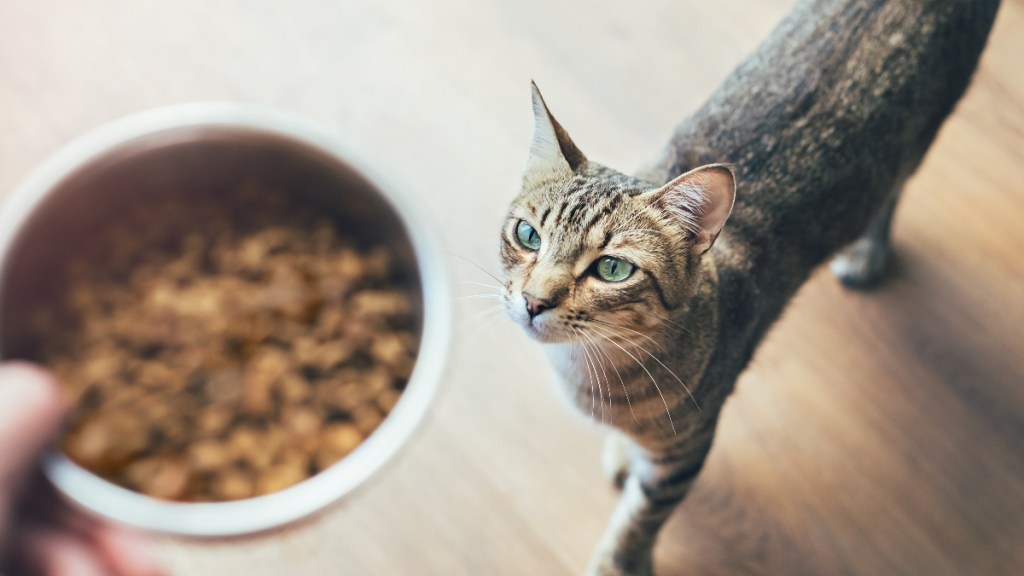
If you find that your cat is unhappy with her food, switch to a new brand, flavor or type. As your cat ages, you will also need to change her food. Kitten food is high in calories and nutrients designed for your cat’s development. Once a cat reaches adulthood, though, at age 1, those extra calories in kitten food can lead to added weight.
When your cat turns 7, it’s time to switch from adult to senior cat food, which supports joint health and the immune system. Most senior cat foods are slightly lower in calories than adult foods, which is ideal for a less active cat.
Switching food should occur gradually, over a seven-to-10-day period. “On the first two days, feed a ratio of one part new food to three parts original food,” says Sperry. “For the next two days, feed half new and half original food. For the last two days of the transition, offer three parts new food, one part original food.”
Even with a gradual adjustment, you may find that your cat isn’t particularly thrilled about the change at first. A word of advice: “Be patient and resist giving in to its persistent meowing and complaints,” adds Torrent. If during this time your cat doesn’t adjust, try again by extending the transition period for another week.
Related: Wondering How to Train a Cat to Use the Toilet? What to Know Before You Ever Start
Still no success? Try other brands, flavors and textures. On your end, look at the new food’s of nutritional value to avoid unnecessary weight gain for your pet. “When switching foods, keep in mind that the calorie density varies between brands, and even between flavors,” says Sperry. “Make sure to check the manufacturer’s recommended feeding guide to plan appropriate portion sizes for your cat.”
Switching foods can be beneficial if he’s picky or going through a new life stage, but it can cause extra stress. If your cat goes a couple of days without eating while you make the transition, take him to the veterinarian.
A version of this article appeared in our partner magazine, Inside Your Cat’s Mind, in 2022.
For more helpful pet tips, keep reading!
Cat Eye Boogers: Vet Explains What They Are and How to Get Rid of Them
Why Cats Chew on Plastic + Expert Explains How To Stop This Pesky Behavior


